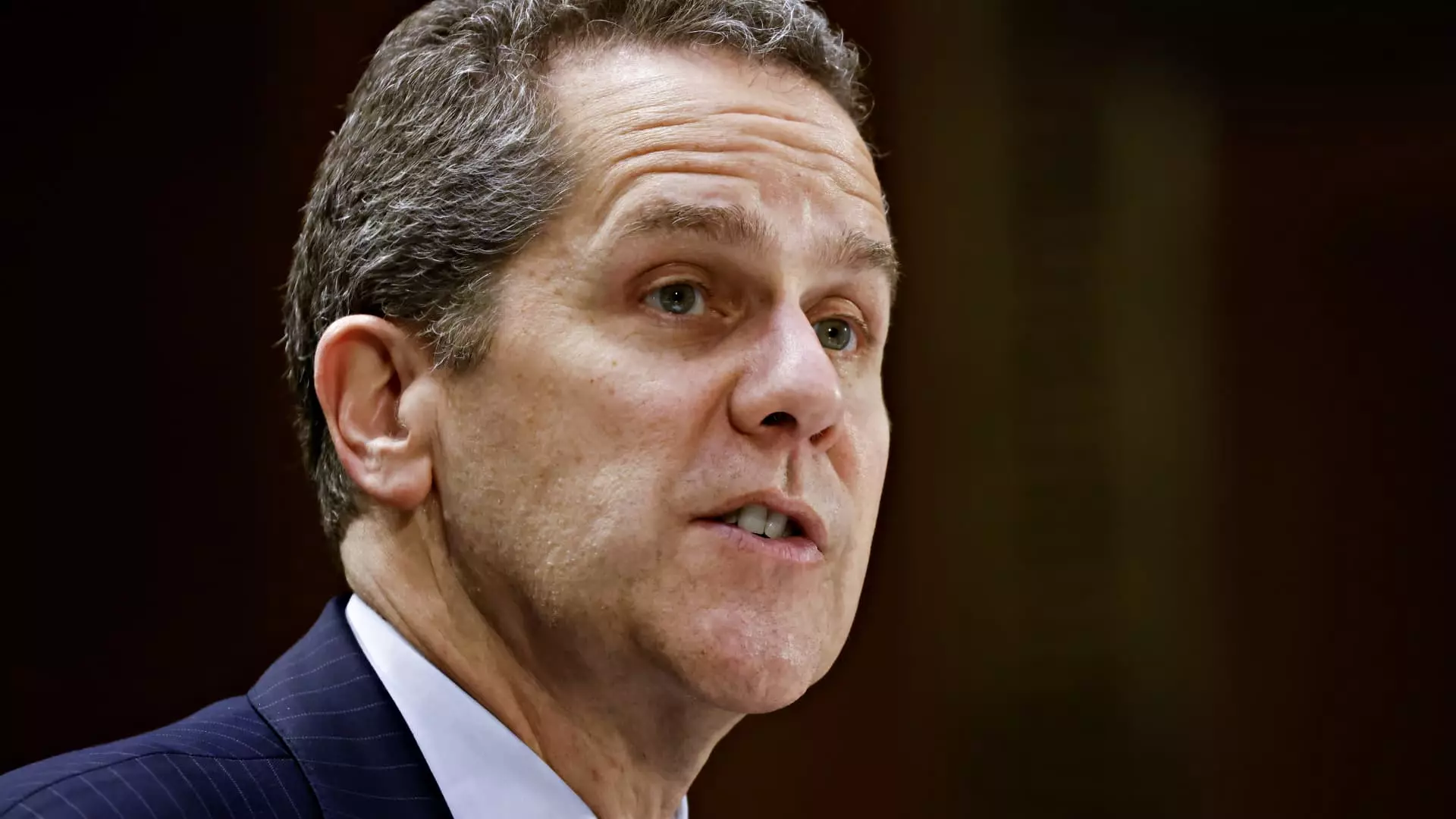The departure of Michael Barr from his role as the Federal Reserve’s vice chair for supervision marks a pivotal moment not only for the institution but also for the wider financial landscape of the United States. Set to officially resign on February 28, Barr’s decision opens the door for President-elect Donald Trump to appoint a replacement, potentially reorienting the supervisory framework of the banking system. His continued service as a governor until 2026 suggests that while he is stepping back from a leadership role, his influence within the Fed remains intact.
Barr’s resignation comes amidst rising speculation that Trump would prefer a more favorable figure towards the banking industry in the supervisory role. Although Barr refrained from directly addressing these rumors, he articulated a desire to avoid distractions that could affect the Federal Reserve’s mission. His comments underscore a recognition that the leadership transition should be seamless and focused on maintaining financial stability—a sentiment echoed by stakeholders in the financial system.
The news of Barr’s resignation sent ripples through the stock market, particularly within the banking sector. Following the announcement, bank stocks experienced notable gains, highlighting investor optimism regarding potential regulatory changes that could transpire under new leadership. The SPDR S&P Bank exchange-traded fund, which tracks prominent banking institutions, recorded an increase of over 1%. This response from the market reflects a broader sentiment that a shift in policy direction could reinvigorate the banking industry, especially after years of stringent regulations put in place after the 2008 financial crisis.
With Barr’s exit, the Federal Reserve stands on the brink of significant regulatory decisions. As noted in the announcement, the institution will pause any major changes until a successor is appointed. This is crucial as the Fed has been working on updating a controversial set of regulations known as the Basel endgame, which has faced resistance from numerous financial institutions. The ongoing dialogue surrounding these rules signals a broader stress point within the industry, leading many to speculate about how Trump’s appointee might approach such challenges.
Moreover, as the Fed’s board is limited to seven members, Trump will need to select a candidate from the current pool of governors who aligns with his administration’s goals—balancing regulation with the interests of the banking sector. The continual evolution of the regulatory framework is fundamental to preventing the kinds of crises witnessed in early 2023 when entities like Silicon Valley Bank collapsed, prompting emergency measures from the Fed.
Given the intertwined nature of regulatory policy and market dynamics, Barr’s resignation introduces a leadership void at a sensitive time. The Federal Reserve has been operating under immense scrutiny, especially in light of its role in mitigating financial crises. His departure could present both risks and opportunities as the banking industry looks for signs of stability and clarity. The choice of Barr’s successor will thus bear considerable weight on both the immediate financial ecosystem and broader economic health in the years to come.
As the new administration takes charge, the financial landscape awaits with bated breath, eager to see how these changes unfold. The impact of this leadership transition, both in perception and reality, will resonate across financial markets, influencing policy direction and shaping the future of banking regulation in the United States.


Leave a Reply